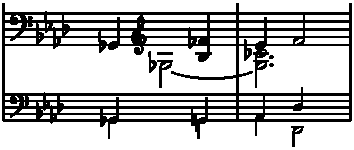



|
b. 243-245
|
composition: Op. 21, Concerto in F minor, Mvt I
..
The absence of category imprint: Differences between sources issues: Errors in GE , GE revisions |
||||||||
|
b. 243-244
|
composition: Op. 21, Concerto in F minor, Mvt III
..
There is an evident non-compliance of the part of the L.H. in A with the cello and double bass sequence in Morch within ½A: category imprint: Differences between sources; Corrections & alterations issues: Accompaniment changes , Authentic corrections of FE , Authentic corrections of GE |
||||||||
|
b. 243-244
|
composition: Op. 21, Concerto in F minor, Mvt III
..
Starting the slur already from the 1st crotchet in GE1 (→FE→EE) is a typical inaccuracy of the engraver of GE1. category imprint: Differences between sources issues: Inaccuracies in GE , GE revisions |
||||||||
|
b. 243
|
composition: Op. 21, Concerto in F minor, Mvt III
..
In FE the last chord has a quaver stem. The absence of rest, required if the chord was shortened, proves that it is a mistake, probably stemming from a misunderstanding at the time of implementing extensive proofreading of pitch and rhythmic values in bars 243-244. category imprint: Interpretations within context; Differences between sources issues: EE revisions , Errors in FE , Errors resulting from corrections |
||||||||
|
b. 243
|
composition: Op. 19, Bolero
..
category imprint: Differences between sources issues: EE revisions |


 in
in 

 in
in 

 .
.
